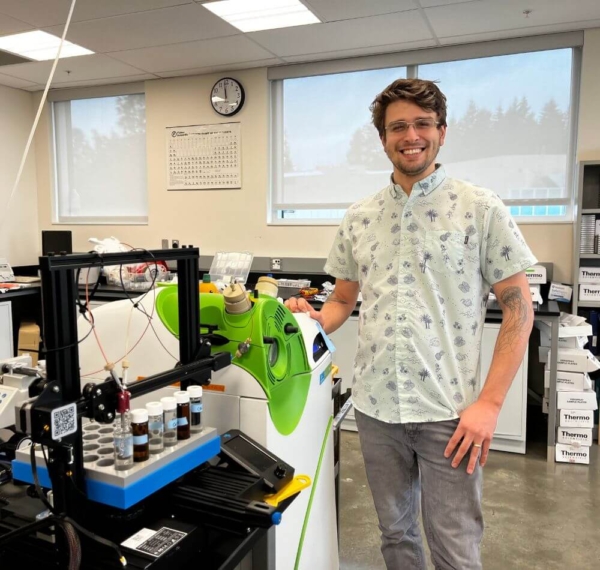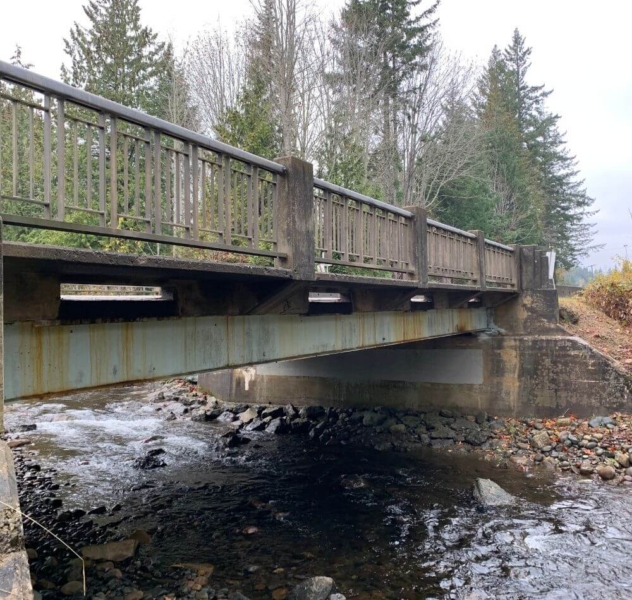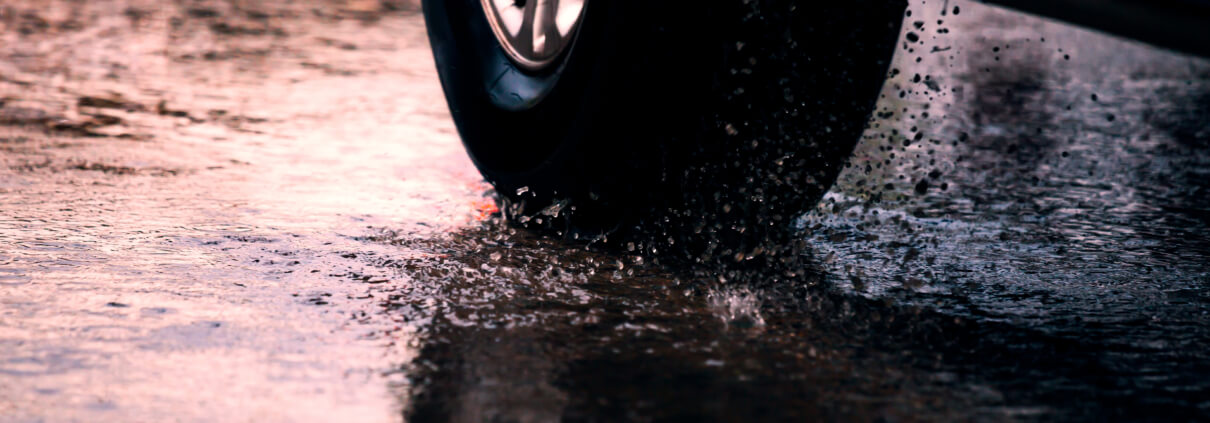What’s killing coho?
B.C. researchers study urban pollution washing into local creeks and the impacts on Pacific salmon.
This story originally appeared in the Fall 2023 edition of Salmon Steward, the Pacific Salmon Foundation’s quarterly print magazine.
When it rains, it pours.
In urban areas, roads collect a medley of contaminants – from tires, brake pads, car washes, vehicle exhaust, and road salts among others – that can wash into salmon-bearing streams during storms.
In some cases, urban pollution can be lethal for salmon.

A common tire preservative chemical, known as 6PPD, oxidizes when exposed to ozone and transforms into a new compound called 6PPD-quinone, which is acutely toxic and causes “urban run-off mortality syndrome” in some fish species, with coho salmon being the most vulnerable.
Toxicity of 6PPD-quinone is an evolving research topic, but existing evidence suggests that not all salmon species are equally affected and that further research is needed to understand variability in vulnerability, sub-lethal effects, and methods of exposure.
Scientists across the province are working to answer burning questions about 6PPD-quinone. Where is the compound present and at what concentrations? Where are the most problematic inputs into streams? How should researchers target mitigation efforts?
PSF is supporting the British Columbia Conservation Foundation (BCCF) with their efforts to monitor 6PPD-quinone in salmon streams during storm events on the east coast of Vancouver Island in collaboration with First Nations and volunteer stewardship groups. Additionally, BCCF has partnered with the Applied Environmental Research Lab at Vancouver Island University, as they have developed a method to rapidly analyze samples to detect 6PPD-quinone in streams.

University of Victoria chemist Jonathan Monaghan in a research lab.
“There are still a lot of unknowns with regards to 6PPD-quinone, the catalogue of species that it may impact, and which systems in B.C. are the most impacted,” says Haley Tomlin, a BCCF biologist.
In 2022, BCCF and partners sampled 13 different waterways during rain events on Vancouver Island, detecting 6PPD-quinone in 10 streams. Of those, three waterways showed 6PPD-quinone concentrations above the lethal concentration limit for juvenile coho.
Although it will take time for researchers to collect sufficient samples in B.C., recent research shows that green infrastructure – like rain gardens – are effective at removing 6PPD-quinone. Research published out of UBC in 2023 found that rain gardens can effectively filter out more than 90 per cent of 6PPD-quinone inputs to streams during a typical storm.
The Road Salt and Salmon Project
Road salts, another substance that spills into streams, are used to de-ice roads across Canada every year. Previous research suggests that juvenile salmon exposure to road salts in their freshwater habitat before they’ve adapted to saltwater is associated with mortality and growth issues.
A five-year project led by researchers from UBC, SFU, and BCIT, and in partnership DFO and 13 local community groups, is studying the impact of road salts in more than 15 urban creeks across the Lower Mainland.

The Wilfred Creek Bridge in the Comox Valley, B.C.
PSF’s Community Salmon Program funds Still Moon Arts Society, a community group that is surveying benthic invertebrates, a salmon food source, in Still Creek.
“Twice a year, we will collect data in sections of the creeks that are both impacted and unimpacted by road salts to gather baseline information of the effects of road salts on the salmon food web,” says Adrian Avendaño, the stewardship programs manager at Still Moon Arts. “We will work with the project team on developing public education resources to raise awareness of the road salt issue.”
Research on pollutants and their impacts on fish and freshwater habitat is rapidly expanding. PSF is working with partners to support funding and coordination in the hopes of rapidly applying research findings to activate mitigation strategies.
You can donate to the Community Salmon Program here.



